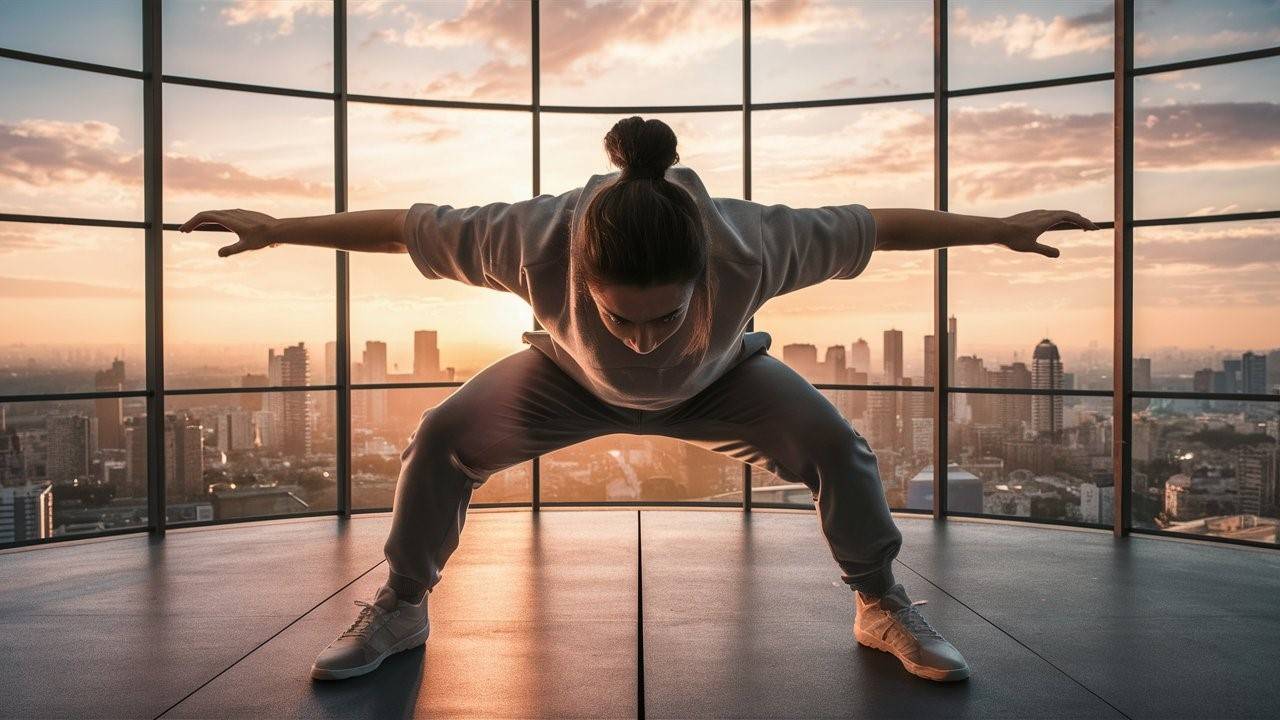Discover 5 effective vertigo exercises to overcome dizziness naturally. Learn step-by-step techniques, expert tips, and how to regain balance safely at home.
Quick Summary: Vertigo exercises.
The 5 most effective exercises are:
- Epley Maneuver
- Brandt-Daroff Exercise
- Gaze Stabilization Exercise
- Balance Training
- Cawthorne-Cooksey Exercises: Perform these exercises daily for the best results, but consult a doctor before starting.
Introduction
Have you ever felt like the world is spinning around you, even when you’re standing still? If so, you’re not alone. As someone who has personally battled vertigo, I understand how debilitating and frustrating this condition can be. That’s why I’m eager to share with you the vertigo exercises that have been a significant change in my journey to overcome dizziness naturally.
In this comprehensive guide, we’ll dive deep into five powerful vertigo exercises that can help you regain your balance and confidence. I’ve researched these exercises extensively and practiced them myself, so I can offer you insights based on scientific evidence and personal experience.
Before we begin, remember that while vertigo exercises can be incredibly effective, it’s crucial to consult with a healthcare professional before beginning any unaccustomed exercise routine, particularly if you’re dealing with vertigo.
1. The Epley Maneuver: Your First Line of Defence.

The Epley Maneuver is often considered the gold standard of vertigo exercises, especially for those dealing with Benign Paroxysmal Positional Vertigo (BPPV). This exercise is designed to relocate the calcium crystals in the inner ear, which are frequently responsible for causing vertigo symptoms.
Step-by-Step Guide:
- Position yourself on the edge of your bed and rotate your head 45 degrees to the right.
- Quickly, lie back with your shoulders on the pillow, your head reclined, and your nose pointed up. Hold for 30 seconds.
- Rotate your head 90 degrees to the left while keeping it level. Maintain this position for 30 seconds.
- Turn your head and body another 90 degrees to the left, so you’re facing the bed. Keep this position for 30 seconds.
- Slowly sit up on your left side.
Repeat this sequence 3 times before bed each night until your vertigo symptoms subside.
Personal Experience: When I first tried the Epley Maneuver, I felt a bit dizzy during the exercise. However, after a few days of consistent practice, I noticed a significant reduction in my vertigo symptoms. It’s crucial to perform this exercise slowly and carefully to avoid exacerbating your dizziness.
2. Brandt-Daroff Exercise: Building Vestibular Resilience

The Brandt-Daroff Exercise is another powerful tool in your arsenal of vertigo exercises. This exercise helps your brain adapt to the confusing signals it might be receiving from your inner ear.
Step-by-Step Guide:
- Start by sitting upright on the edge of your bed.
- Quickly lie down on your right side, with your nose pointed up at about a 45-degree angle. Hold for 30 seconds.
- Sit up quickly and return to the starting position. Hold for 30 seconds.
- Quickly lie down on your left side, nose pointed up at a 45-degree angle. Hold for 30 seconds.
- Sit up quickly and return to the starting position.
Repeat this sequence 5 times, twice a day.
Personal Experience: I found the Brandt-Daroff Exercise to be particularly helpful in reducing the frequency of my vertigo episodes. While it can be a bit uncomfortable at first, I noticed that my balance improved significantly after a few weeks of consistent practice.
3. Gaze Stabilization Exercise: Sharpening Your Focus

Gaze stabilization is a crucial skill for managing vertigo, and this exercise is designed to improve your ability to focus on objects while your head is moving. This is one of the vertigo exercises that can have a profound impact on your daily life.
Step-by-Step Guide:
- Hold a small object (like a pen) at arm’s length in front of you
- Keep your eyes focused on the object while you move your head from side to side.
- Perform this movement for 1 minute.
- Rest for 1 minute, then repeat the exercise, this time moving your head up and down.
- Perform 3 sets in each direction.
As you progress, you can increase the speed of your head movements and the complexity of the background behind the object.
Personal Experience: The gaze stabilization exercise was a significant change for me. It helped me regain confidence in everyday activities, like walking in crowded areas or reading while in a moving vehicle. Start slowly and gradually increase the difficulty to avoid triggering severe dizziness.
4. Balance Training: Strengthening Your Core Stability

Balance training is an essential component of vertigo exercises. These exercises help improve your overall stability and reduce the risk of falls.
Step-by-Step Guide:
- Stand with your feet together and arms at your sides.
- Slowly lift one foot off the ground and hold for 30 seconds.
- Switch feet and repeat.
- As you improve, try closing your eyes or standing on an uneven surface like a foam pad.
Perform this exercise for 5 minutes, twice a day.
Personal Experience: Balance training was challenging at first, but I found it incredibly rewarding. Not only did it help with my vertigo symptoms, but it also improved my overall physical confidence. I started by holding onto a chair for support and gradually worked up to balance with my eyes closed.
5. Cawthorne-Cooksey Exercises: A Comprehensive
Approach

The Cawthorne-Cooksey Exercises are a series of vertigo exercises designed to retrain your brain to process balance information correctly. These exercises progress from simple head movements to more complex whole-body activities.
Step-by-Step Guide:
- Eye Movements:
- Look up and down
- Look from side to side
- Concentrate on your finger as it moves from 3 feet to 1 foot in front of your face.
- Head Movements:
- Bend your head forward and backward
- Turn your head from side to side
- Tilt your head from side to side
- Sitting Movements:
- Shrug and circle your shoulders
- Bend forward and pick up objects from the ground
- Pass an object from one hand to the other under your knees
- Standing Exercises:
- Pass an object around your waist
- Throw a ball from hand to hand above eye level
- Change from a sitting to a standing position with eyes closed
- Moving About Exercises:
- Walk across the room with eyes open, then closed
- Walk up and down a slope with eyes open, then closed
- Stand on a soft surface with eyes open, then closed
Perform these exercises twice daily, starting with 5 repetitions of each and gradually increasing to 10 repetitions as you improve.
Personal Experience: The Cawthorne-Cooksey Exercises were instrumental in my recovery from vertigo. I found them to be a comprehensive approach that addressed various aspects of balance and coordination. Start slowly and listen to your body – it’s normal to feel slightly dizzy during these exercises, but stop if you experience severe dizziness or nausea.
Tips for Success with Vertigo Exercises
- Consistency is key: Perform these vertigo exercises regularly, even on days when you’re feeling better.
- Create a safe environment: Ensure you have a clear, open space to perform the exercises. Remove any tripping hazards.
- Start slowly: Begin with gentle movements and accumulate the intensity and duration of your exercises.
- Stay hydrated: Proper hydration can help minimize dizziness during and after your vertigo exercises.
- Keep a journal: Track your progress and any symptoms you experience. This can be valuable information for your healthcare provider.
FAQs: Vertigo Exercises
What is the best exercise for vertigo?
The Epley Maneuver is often considered the most effective vertigo exercise, especially for BPPV. However, the best exercise can vary depending on the underlying cause of your vertigo. A combination of different vertigo exercises often yields the best results.
What cures vertigo fast?
While there’s no instant cure for vertigo, the Epley Maneuver can provide quick relief for many people with BPPV. For other types of vertigo, a combination of vertigo exercises, medication (if prescribed by a doctor), and lifestyle changes can help manage symptoms effectively.
What can trigger vertigo?
Common triggers include:
Sudden head movements
Stress and anxiety
Dehydration
Certain foods (e.g., those high in salt or sugar)
Lack of sleep
Changes in barometric pressure]
What not to do when you have vertigo?
Avoid:
Sudden jerky head movements
Getting up too quickly from a lying or sitting position
Staring at moving objects or screens for long periods
Consuming alcohol or caffeine in excess
Skipping meals
Neglecting your vertigo exercises
Will drinking water help with vertigo?
Yes, staying hydrated can help alleviate vertigo symptoms. Dehydration can worsen dizziness, so drinking plenty of water throughout the day is crucial. However, water alone is not a cure and should be combined with appropriate vertigo exercises and medical treatment.
How to realign the crystals in your ear?
The Epley Maneuver, described earlier in this post, is designed to realign the calcium crystals in your inner ear. This vertigo exercise is particularly effective for BPPV. However, it’s important to have a healthcare professional show you how to perform this maneuver correctly before attempting it at home.
Conclusion
Living with vertigo can be challenging, but with the right approach and consistent practice of these vertigo exercises, you can significantly improve your symptoms and quality of life. Remember, everyone’s journey with vertigo is unique, so be patient with yourself and celebrate minor victories along the way.
Thank you for reading this comprehensive guide on vertigo exercises. I hope you find these techniques as helpful as I have in my battle against vertigo. Here’s to a steadier, more balanced future!
Recommended Reading:



